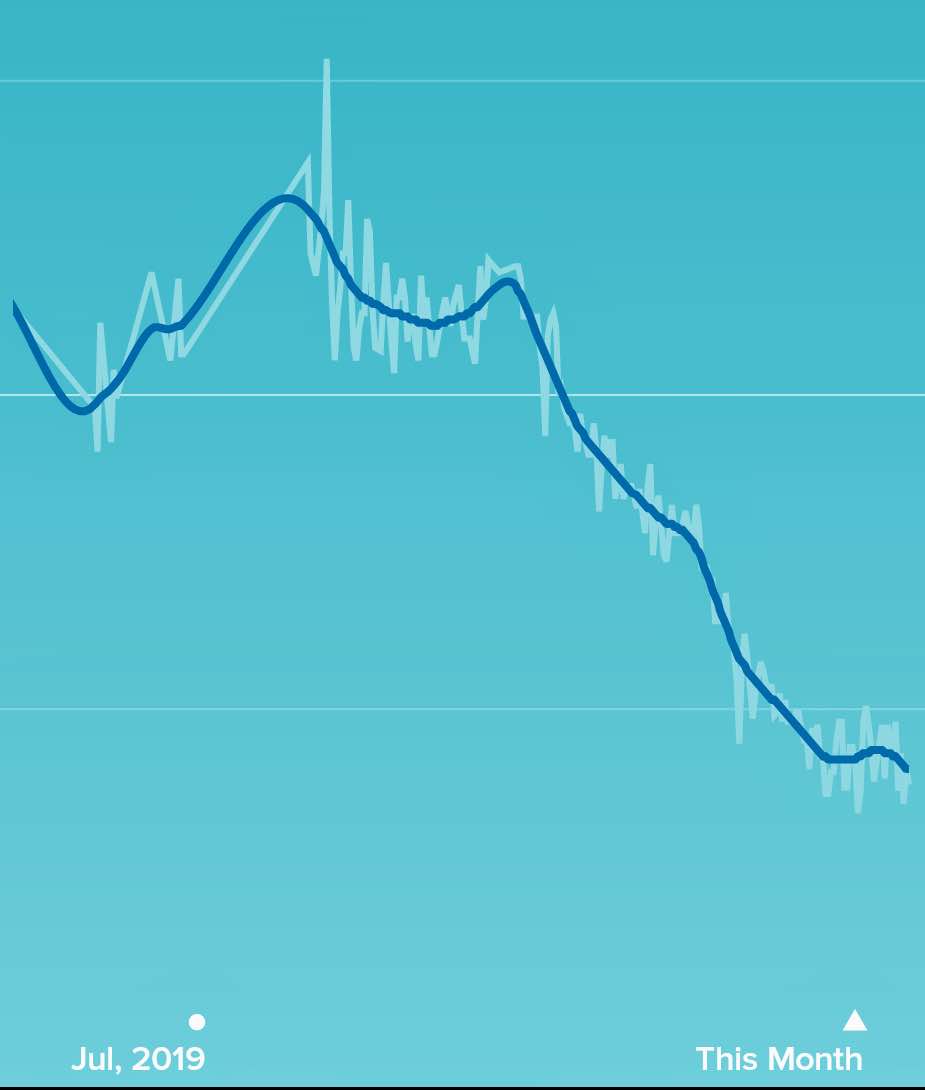My So-Quantified Life, Part 1: Collecting Data
I lost 15 pounds and 3% body fat in 3 months. How did I do it? Quantification and slow but steady habit change.

I'm a software engineer and tech leader. That's fancy LinkedIn-speak for saying that I make computers do things and I keep other engineers happy in their careers. I like to collapse that down into the term Maker/Manager.
In my line of work, I've found the most successful software to be built using data-driven techniques. You generate lots of data, conduct lots of experiments, conduct retros and iterate. Why don't we apply that to our personal lives if we want to be our best selves?
I applied these concepts to my own life to lose those 15 pounds. I've maintained this new weight now for 2 months. There are 4 main components to this quantification / data-driven technique:
- Collect Data
- Change Your Habits and Thinking
- Do the Work
- Reflect and Iterate
Collecting Data
Back in 2013, I bought myself a Fitbit as a birthday present so I could quantify my own health data. (Or perhaps it was because I'm an early adopter and I love gadgets.) You could do this with a variety of other devices like the Apple Watch, but I've found the sweet spot of data collection, features, and importantly battery life in Fitbit devices. I started with a Flex and I currently rock a Versa 2.
What kind of data is important for weight loss and improving your health?
- Steps
- Resting Heart Rate
- Weight
- Body Fat Percentage
- Sleep
- Additional Exercise
- Calories Eaten
- Calories Burned
The good news is that modern wearables (including my Fitbit Versa 2) can track all of the above automatically, with the exception of Calories Eaten, Weight and Body Fat Percentage.
Why are these data elements important?
- Steps: This is your base exercise and you already know how to do it.
- Resting Heart Rate: This helps you tell your overall fitness. If this goes down, you're doing well. If it spikes up, you may be sick.
- Weight: This is the main metric people use. Note that it tends to vary normally for whatever reason. It can also go up when you build muscle.
- Body Fat Percentage: Another way to think about this is the inverse of your muscle and bone percentage. Since your bones don't really change much that I know of, seeing this go down even if your weight doesn't change is nice. Note that it can go up as well so don't be discouraged if that happens and your other metrics are good.
- Sleep: The more I read about sleep, the more I'm convinced that it is critical to our overall health. Studies show that if you don't get enough sleep, it will lead to weight gain.
- Additional Exercise: There are a lot of benefits, but basically you want to get 15-60 minutes of exercise daily if you want to get and stay healthy. There are a lot of different ways to exercise but you should get a mix of strength training which builds muscles, cardio which builds heart health and stretching which makes sure your muscles, ligaments and tendons stay in good shape.
- Calories Burned is a nice calculated metric based on the above data. It helps to visualize your weight loss since this should be significantly greater than your Calories Eaten over a sustained period of time.
For Calories Eaten, which you should definitely track if you're starting to get healthier or wanting to lose weight, the best I've found is using a mobile app, eating foods with barcodes and scanning them. If you want to eat fresh foods (which you do) and other food that doesn't have bar codes, get a weight scale and enter it in. This part is a hassle but once you've learned how much you should normally eat, then you don't have to measure anymore.
For Weight and Body Fat Percentage, get a smart scale. I use the Fitbit Aria. I weigh myself daily after waking up and using the bathroom. This helps eliminates variables such as hydration and food that you may have eaten. I do try to get down to the same amount of clothes every time as well. This syncs over WiFi with Fitbit.
Next blog post, I'll cover Changing Your Habits and Thinking. For me, that was the hardest part of this whole process.
- Previous: Closing a Chapter
- Next: I migrated this blog to Eleventy 2.0